Drosera graniticola N.G.Marchant
The epithet, graniticola, is derived from the name of the rock type granite, a granular, crystalline rock of quartz, feldspar and mica, along with the Latin suffix -cola (dwelling), referring to the preferred habitats in which this species grows.
Western Australia – in the region bordered by Hyden, Varley and Kulin.
Grows in washes, as well as the declivities on and around the aprons of granite outcrops in gritty, loam soils.
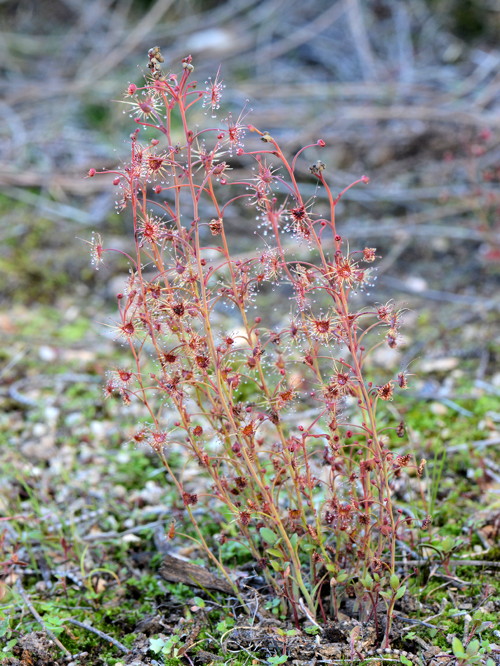
Drosera graniticola. Photo © Richard Nunn.
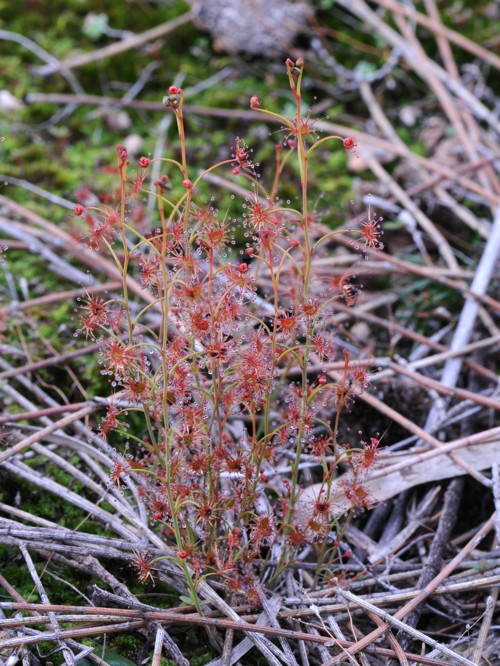
Drosera graniticola. Photo © Richard Nunn.
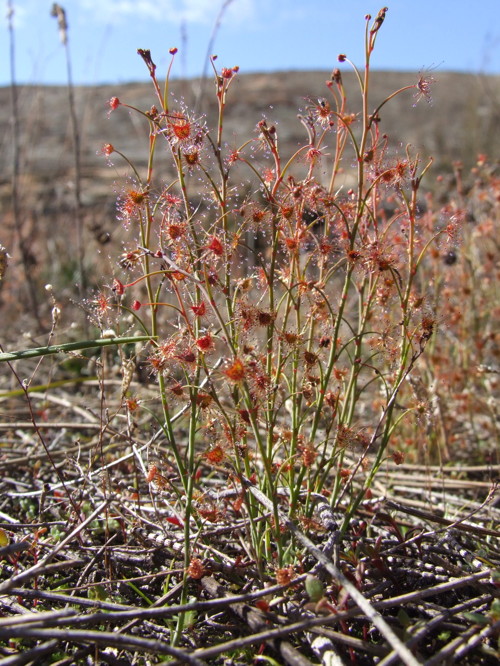
Drosera graniticola. Photo © Richard Nunn.
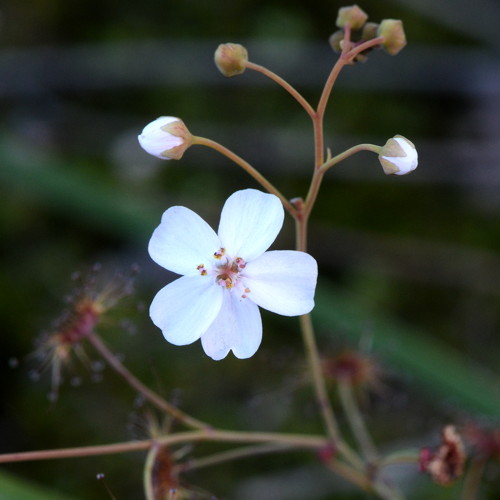
Drosera graniticola. Photo © Richard Nunn.
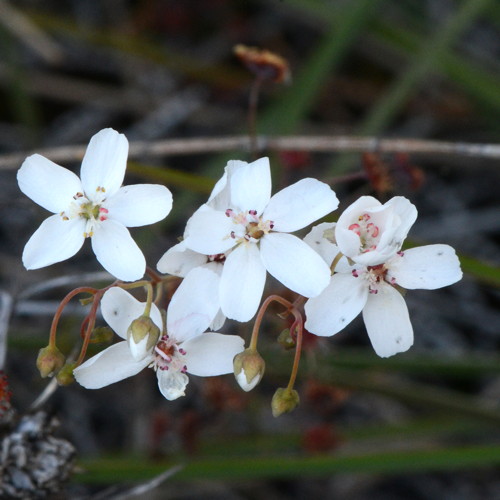
Drosera graniticola. Photo © Richard Nunn.
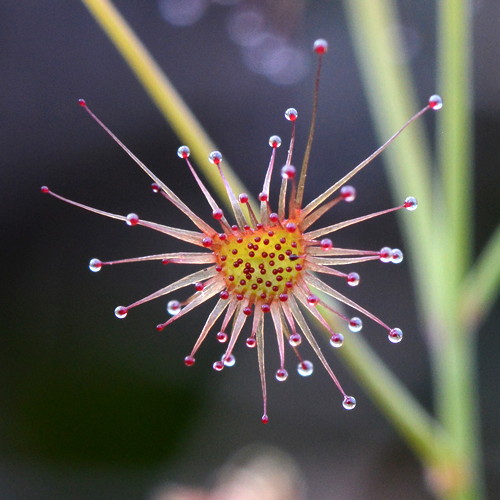
Drosera graniticola. Photo © Richard Nunn.
Drosera gunniana (Planch.) de Salas
The epithet, gunniana, honours Ronald Campbell Gunn (1808–81), botanist, who arrived in Tasmania in 1830. Gunn became a passionate biologist and travelled extensively, dedicating himself to collecting, recording and forwarding specimens of Tasmanian flora and fauna to W.J Hooker.
New South Wales, Victoria, South Australia, Tasmania and New Zealand north of Auckland.
Common in woodland, grassy woodland and extending onto open, grassy habitats such as lawns, at low to mid elevations (<200m).
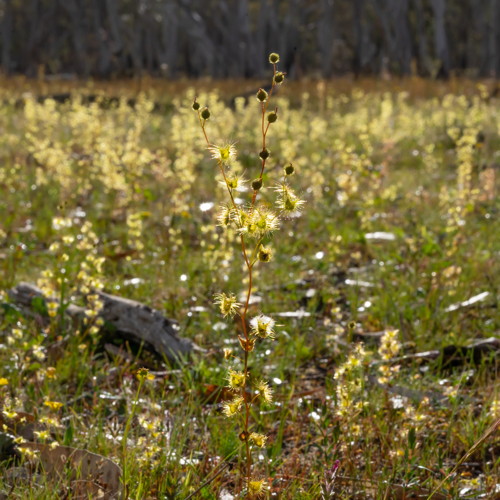
Drosera gunniana. Photo © Boaz Ng.
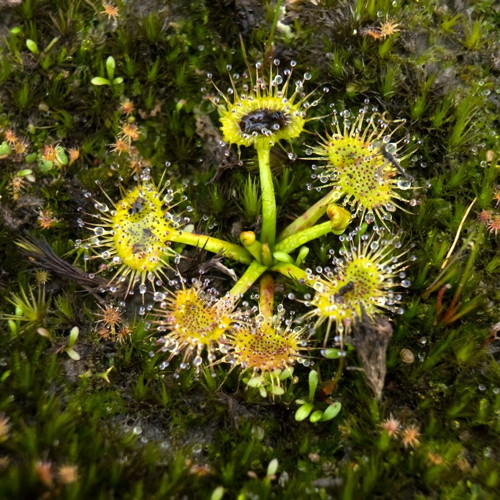
Drosera gunniana. Photo © Boaz Ng.
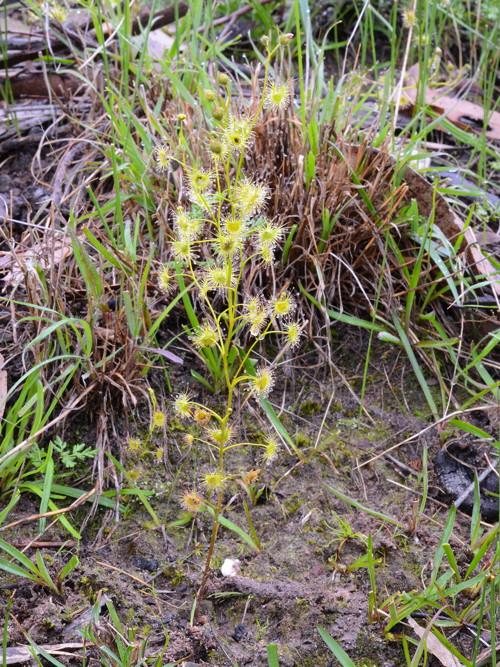
Drosera gunniana. Photo © Richard Nunn.
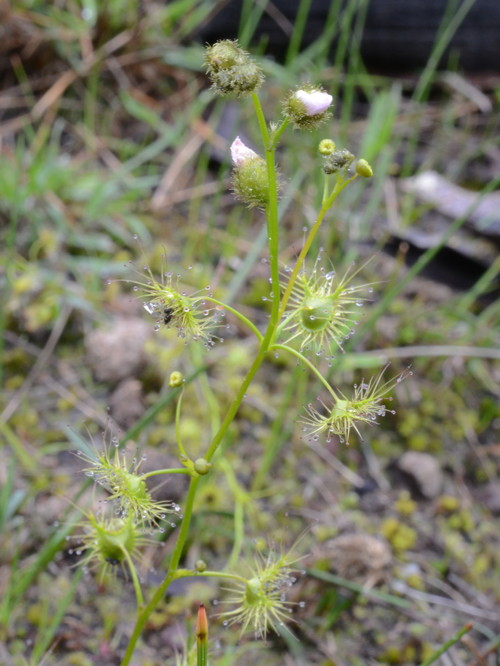
Drosera gunniana. Photo © Richard Nunn.
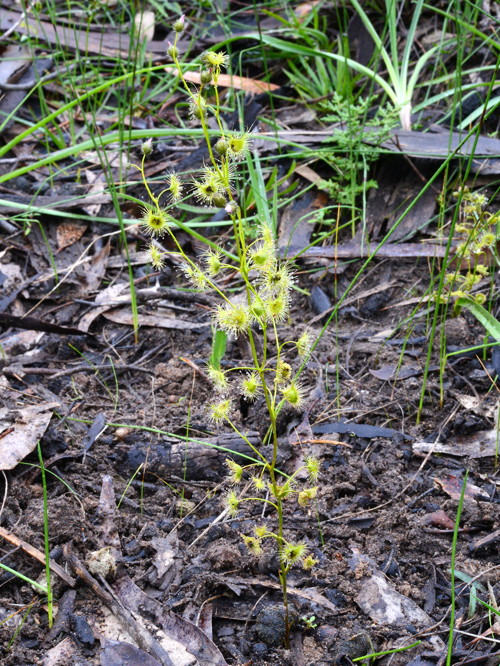
Drosera gunniana. Photo © Richard Nunn.
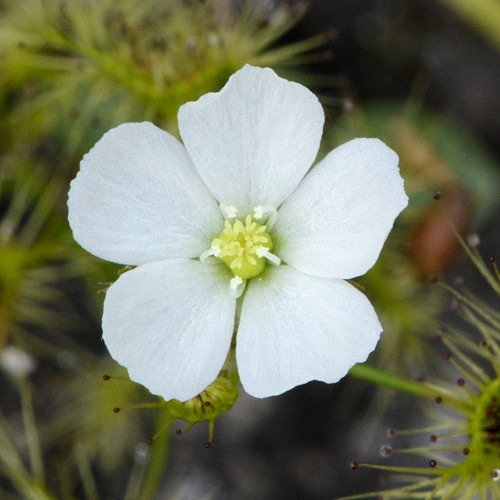
Drosera gunniana. Photo © Richard Nunn.
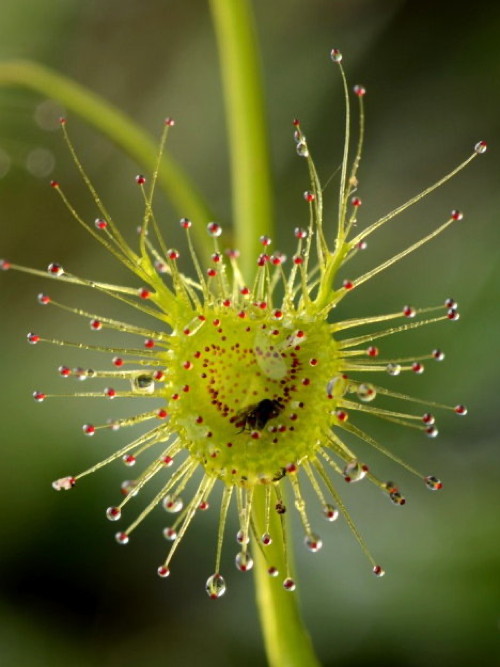
Drosera gunniana. Photo © Richard Nunn.
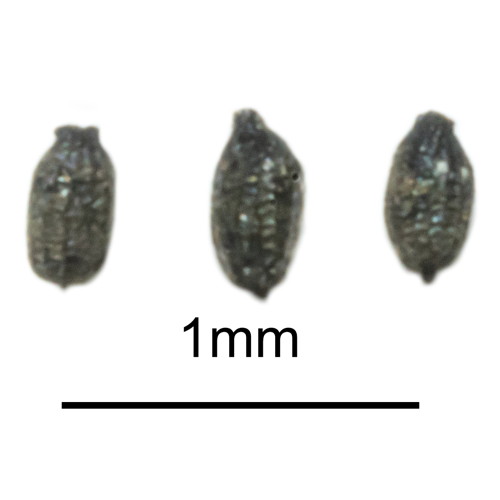
Drosera gunniana. Photo © Boaz Ng.
Drosera heterophylla Lindl.
The epithet, heterophylla, is from the Greek heteros (different) and phyllon (leaf), a reference to the two types of leaves it produces, namely the broadly reniform carnivorous leaves and the non-carnivorous bracts (prophylls).
Western Australia – Mingenew; Wongan Hills; Perth.
Grows on the margins of swamps, often standing in shallow water, wet clay flats, washes of granite outcrops and winter streams. All locations dry out in summer.
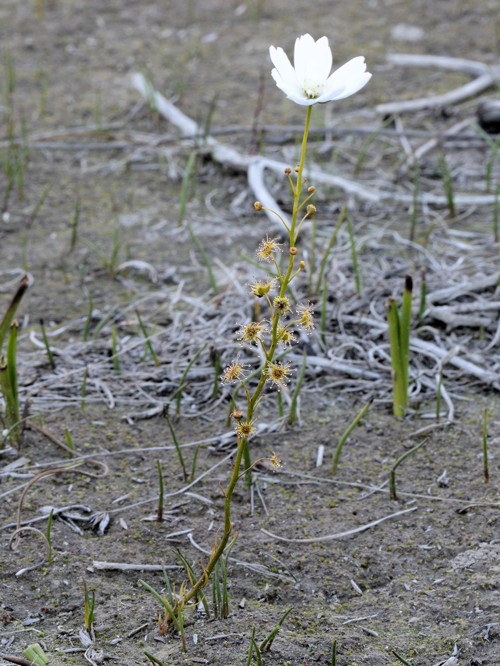
Drosera heterophylla. Photo © Richard Nunn.
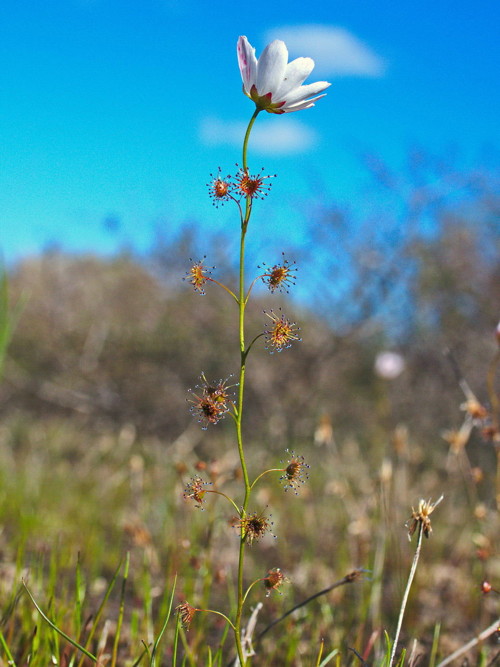
Drosera heterophylla. Photo © Thilo Krueger.
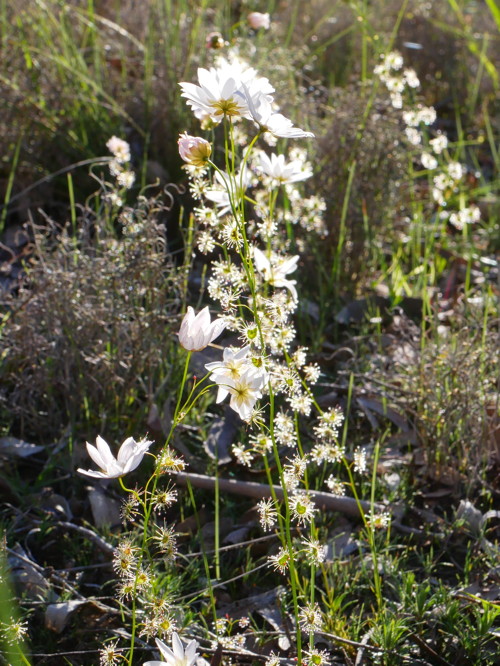
Drosera heterophylla. Photo © Thilo Krueger.
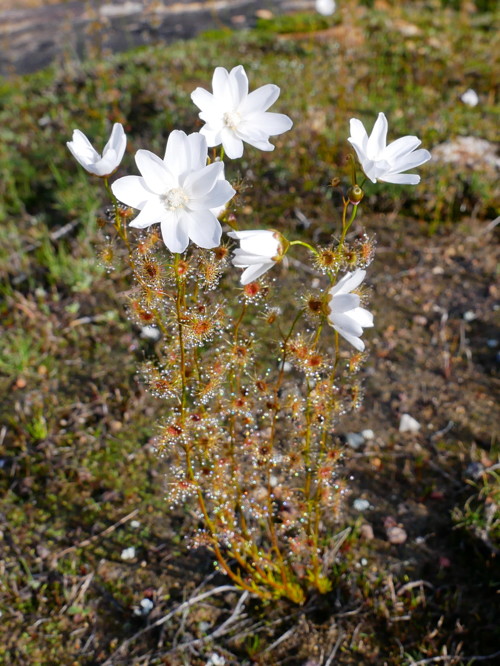
Drosera heterophylla. Photo © Thilo Krueger.
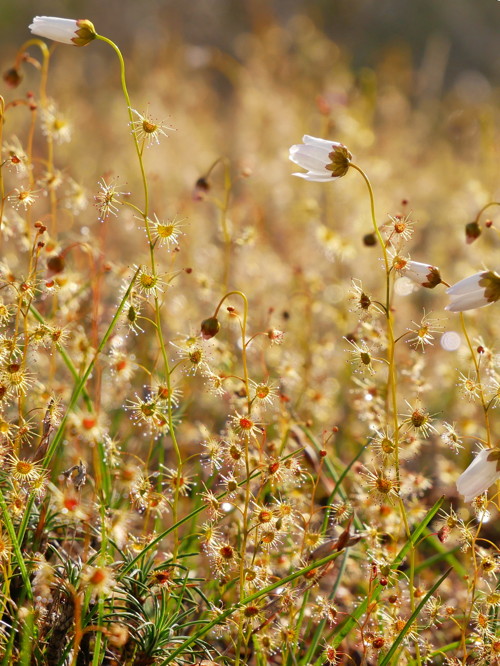
Drosera heterophylla. Photo © Thilo Krueger.
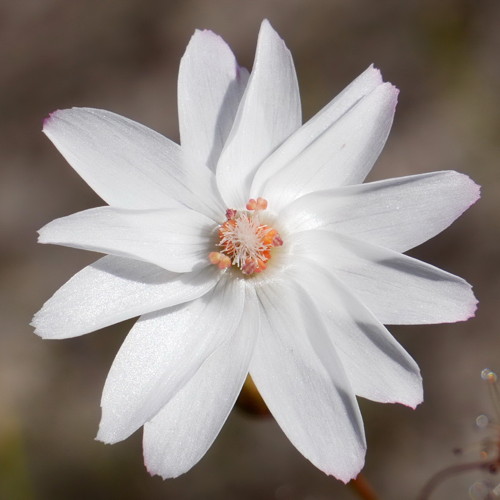
Drosera heterophylla. Photo © Thilo Krueger.
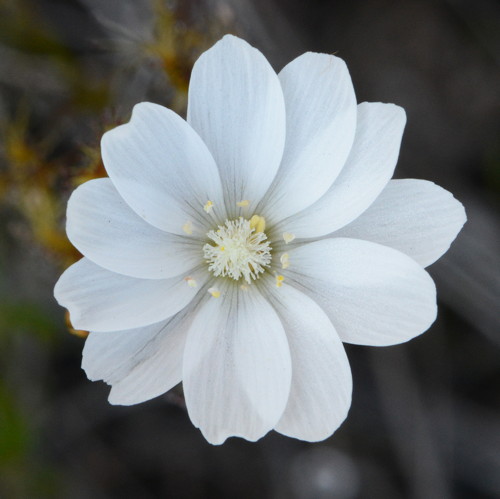
Drosera heterophylla. Photo © Richard Nunn.
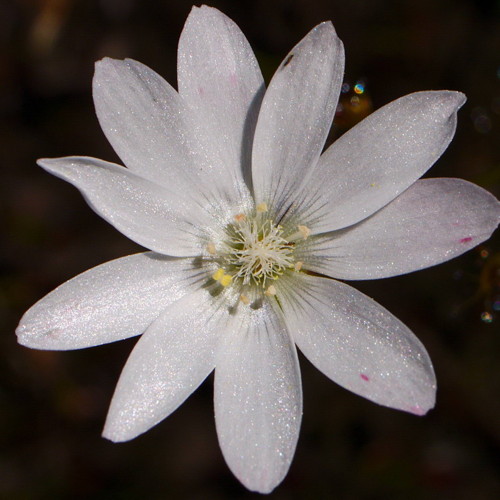
Drosera heterophylla. Photo © Thilo Krueger.
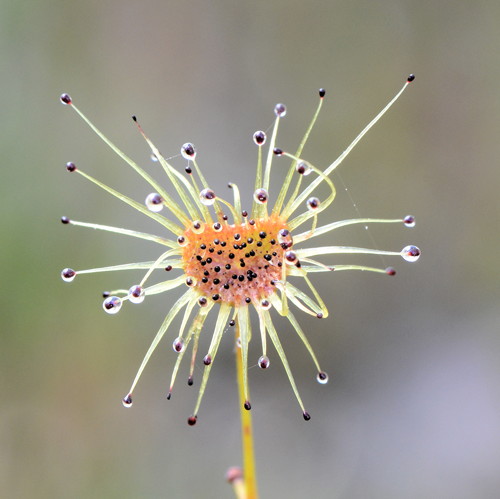
Drosera heterophylla. Photo © Richard Nunn.
Drosera hirsuta Lowrie & Conran
The epithet, hirsuta, is from the Latin hirsutus (hirsute), in reference to the dense, non-glandular, hairy indumentum which covers only the uppermost portion of the major axis and the entire inflorescence, including the pedicels and abaxial surfaces of the sepals.
Western Australia – Occurs from Clackline, to the east of Perth, and north to Kalbarri.
Grows in white or yellow sandy soils on heathland.
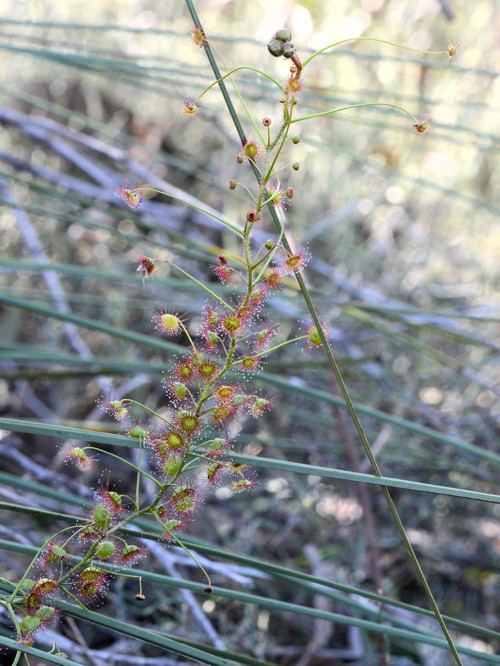
Drosera hirsuta. Photo © Richard Nunn.
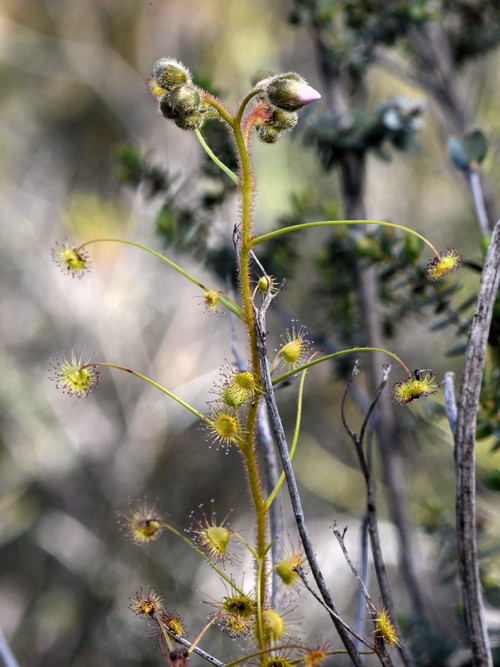
Drosera hirsuta. Photo © Richard Nunn.
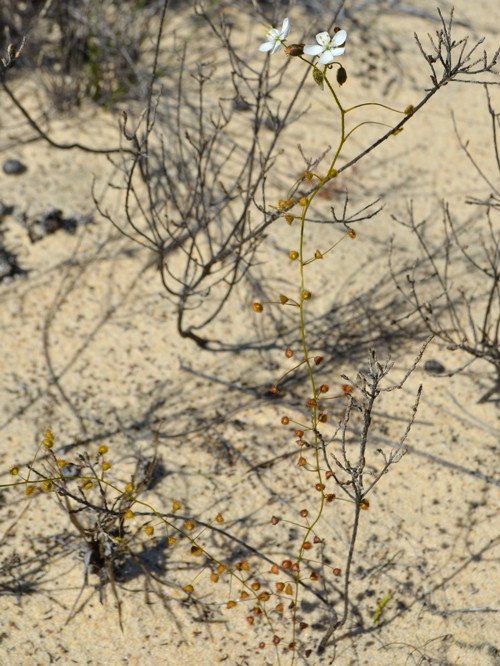
Drosera hirsuta. Photo © Thilo Krueger.
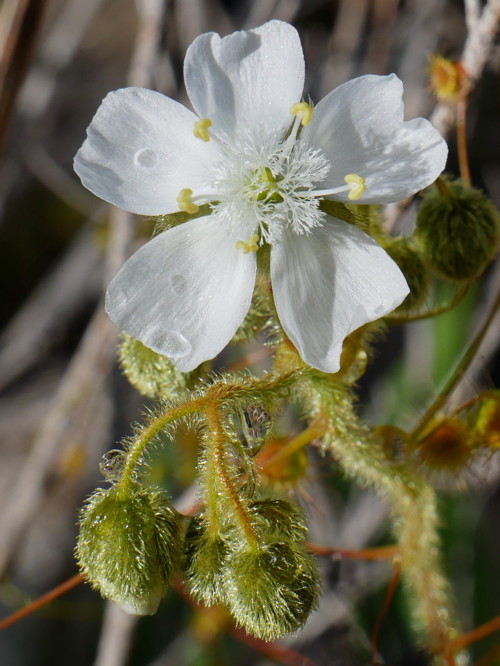
Drosera hirsuta. Photo © Thilo Krueger.
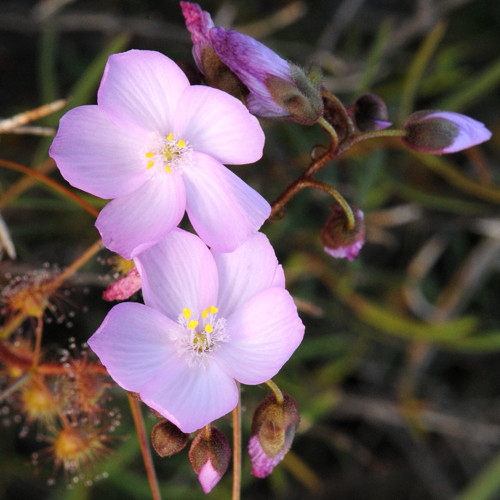
Drosera hirsuta. Photo © Richard Nunn.
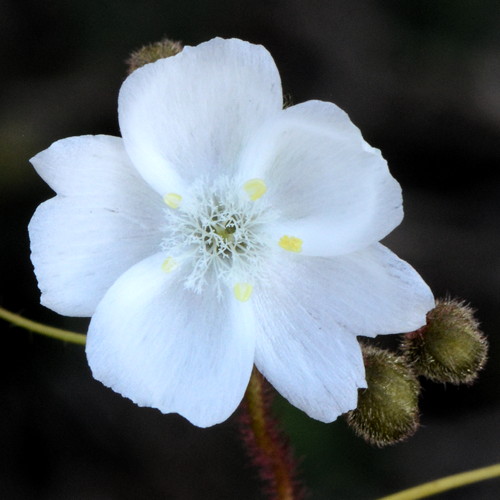
Drosera hirsuta. Photo © Richard Nunn.
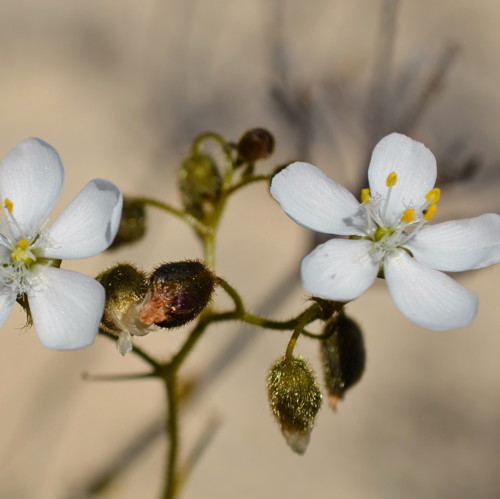
Drosera hirsuta. Photo © Thilo Krueger.
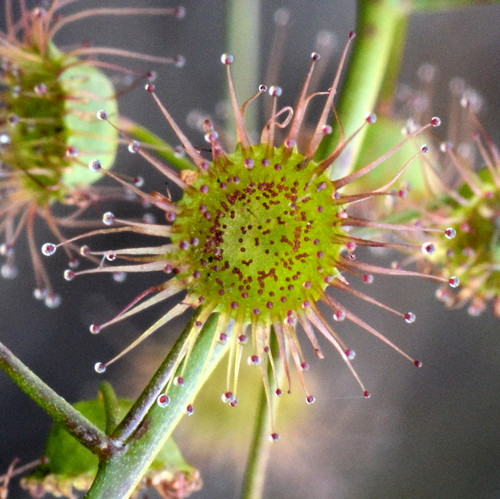
Drosera hirsuta. Photo © Richard Nunn.
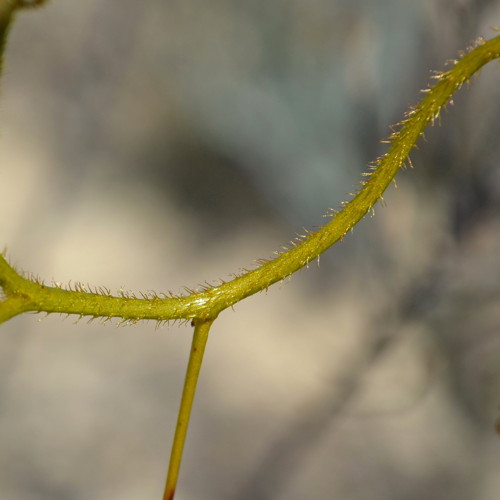
Drosera hirsuta. Photo © Thilo Krueger.
Drosera hookeri R.P.Gibson, B.J.Conn & Conran
The epithet, hookeri, honours Sir Joseph Dalton Hooker (1817–1911), who recognised this taxon as a distinct species and provided the manuscript name Drosera foliosa which was used in 1848 by J.É. Planchon. Sir Joseph Dalton Hooker was one of the greatest British botanists and explorers of the 19th century. Drosera foliosa Hook.f ex Planch. was published in 1848. Unfortunately, this name was used earlier for a Drosera species from the U.S.A., D. foliosa Elliott, which was published in his A sketch of the botany of South Carolina 1: 376 (1817).
South Australia – Mt Remarkable; lower Eyre Peninsula; Adelaide Hills; Naracoorte; Kangaroo Island. TAS. – West Tamar; Launceston; George Town; Dorset; Horsham; Meander Valley; King Island. VIC. – Grampians; Latrobe; Wodonga; Horsham; Ararat; Mildura. A.C.T. – Mt Tennent. N.S.W. – Bega Valley; Bathurst; Ballina; Tamworth; Cessnock; Upper Hunter. QLD – Stanthorpe; Herberton; Duaringa; Dalrymple; Jericho.
Grows in loam soils in depressions on granite outcrops; black soil swampland margins; herb fields; and on low, open shrub lands.
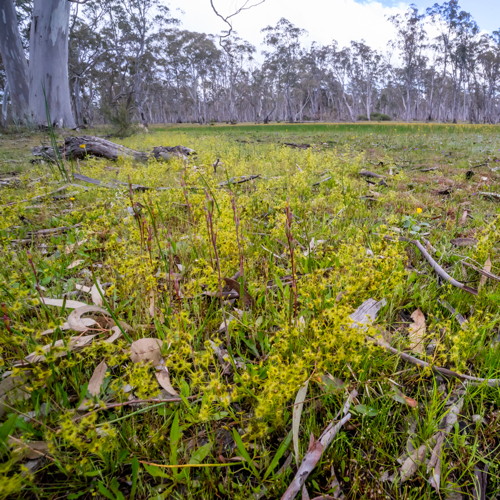
Drosera hookeri. Photo © Boaz Ng.
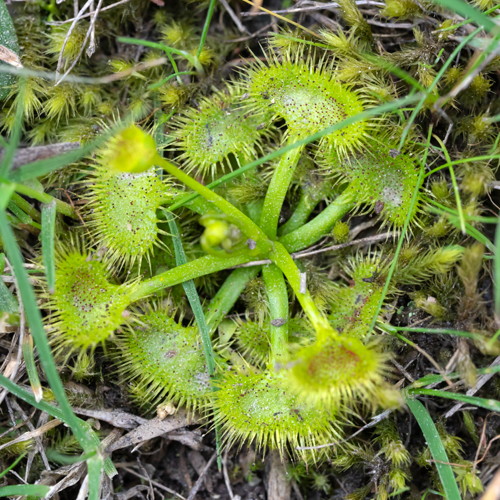
Drosera hookeri. Photo © Boaz Ng.
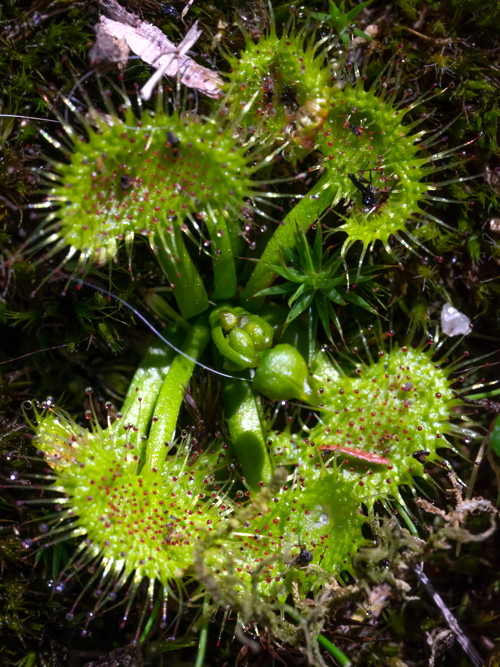
Drosera hookeri. Photo © Boaz Ng.
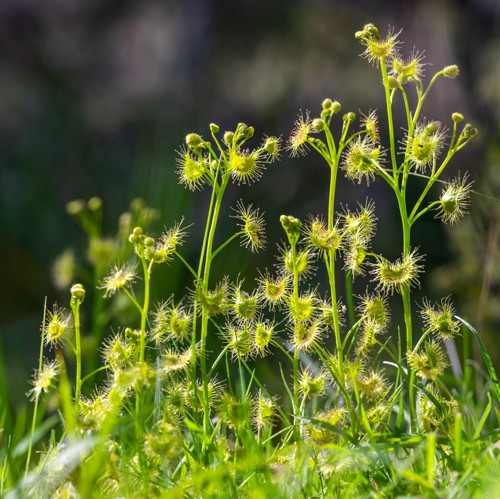
Drosera hookeri. Photo © Boaz Ng.
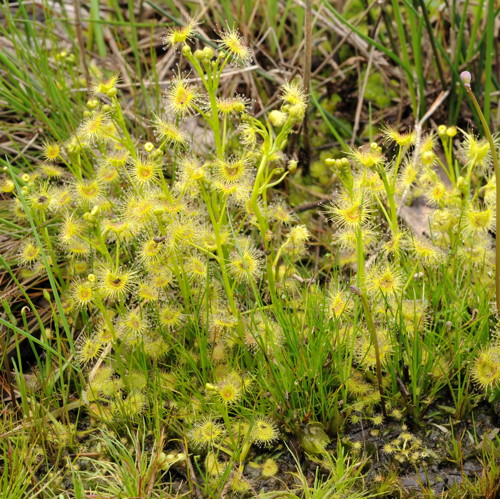
Drosera hookeri. Photo © Richard Nunn.
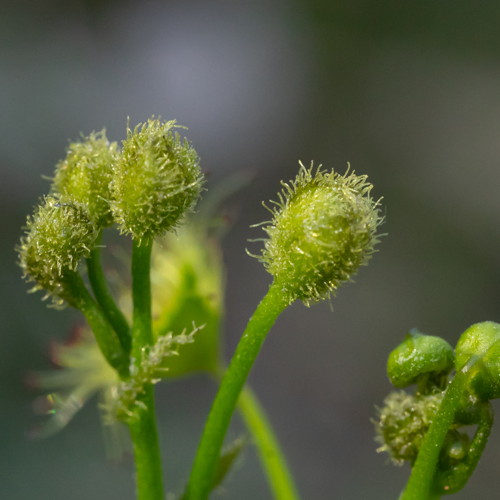
Drosera hookeri. Photo © Boaz Ng.
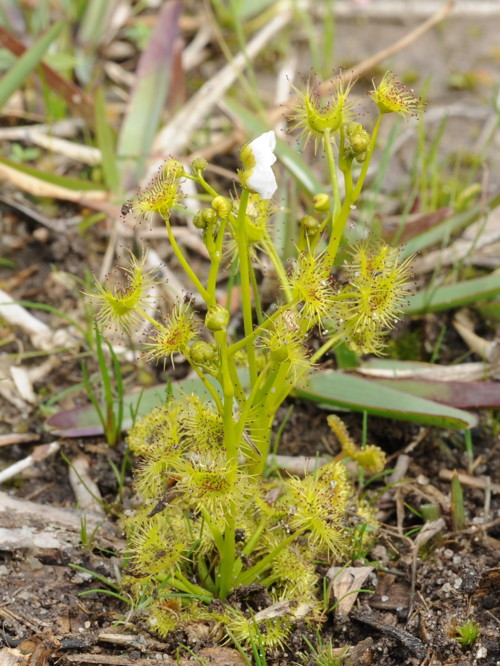
Drosera hookeri. Photo © Richard Nunn.
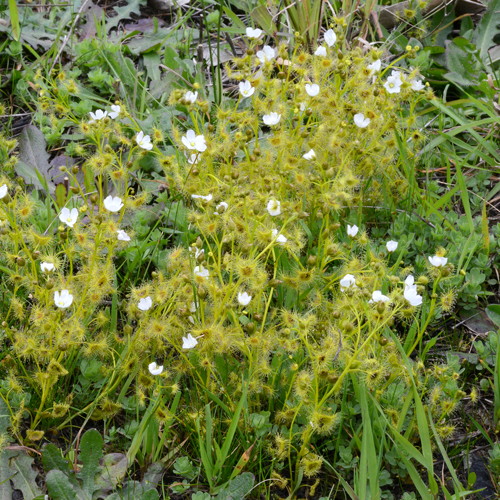
Drosera hookeri. Photo © Richard Nunn.
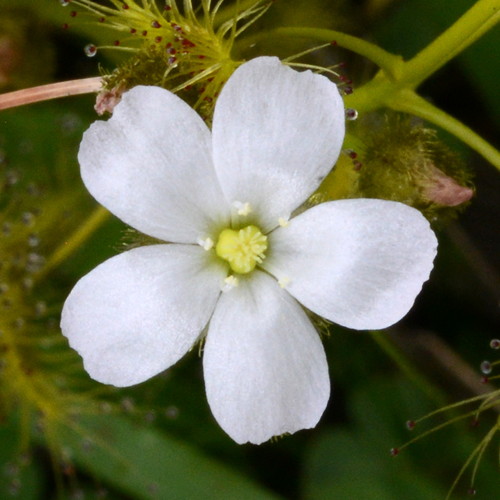
Drosera hookeri. Photo © Richard Nunn.
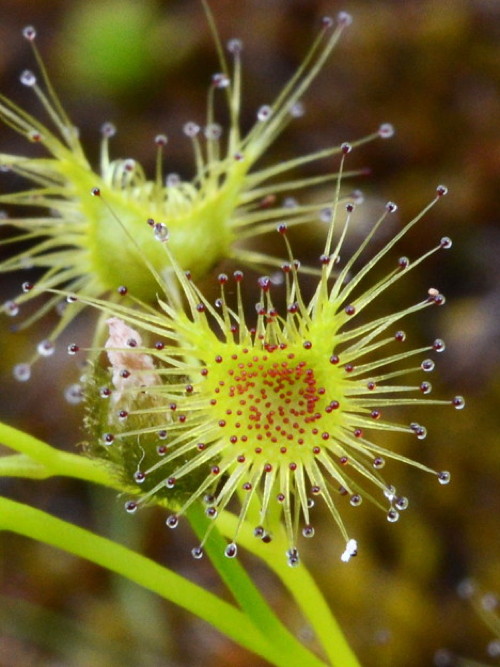
Drosera hookeri. Photo © Richard Nunn.
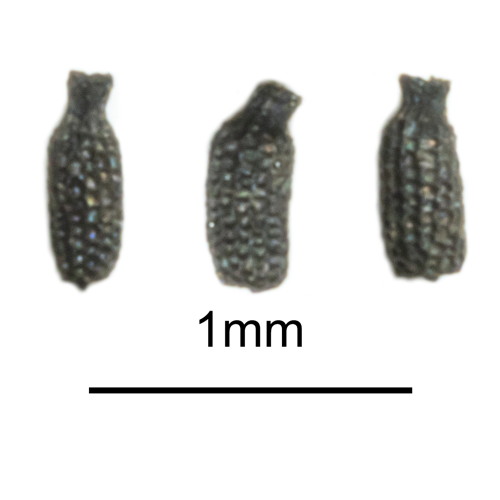
Drosera hookeri. Photo © Boaz Ng.
Drosera hortiorum T.Krueger & G.Bourke.
The specific epithet honours Fred Hort (1937–) and Jean Hort (1952–), enthusiastic field botanists, nature photographers, and volunteers at the Western Australian Herbarium who found this species at the Wandoo National Park type location in 1987.
Known from Glen Forrest, Wandoo National Park (near York, east of Perth) and two additional sites in the wheatbelt region near York and Wickepin.
In the western part of its range, D. hortiorum appears to be associated with low granite outcrops and granite slopes where it grows in poorly drained clay loam with Borya sp. In the eastern part of its range, D. hortiorum has been recorded from within and near shallow drainage channels and moist sandplains in sandy clay.
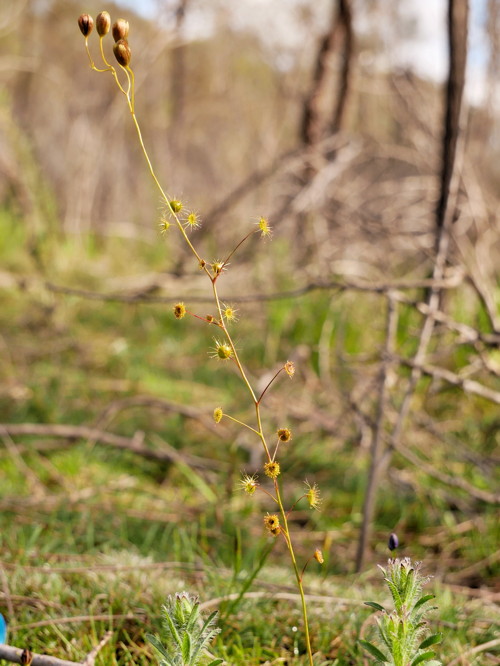
Drosera hortiorum. Photo © Thilo Krueger.
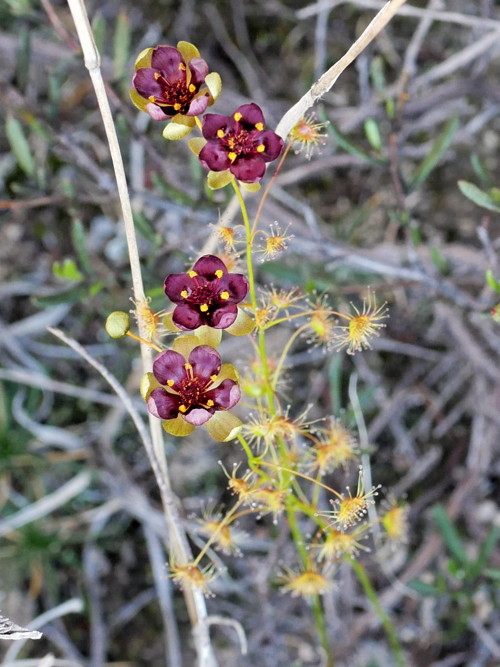
Drosera hortiorum. Photo © Thilo Krueger.
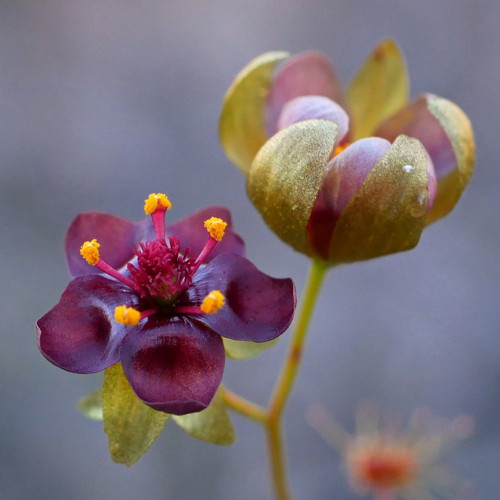
Drosera hortiorum. Photo © Thilo Krueger.
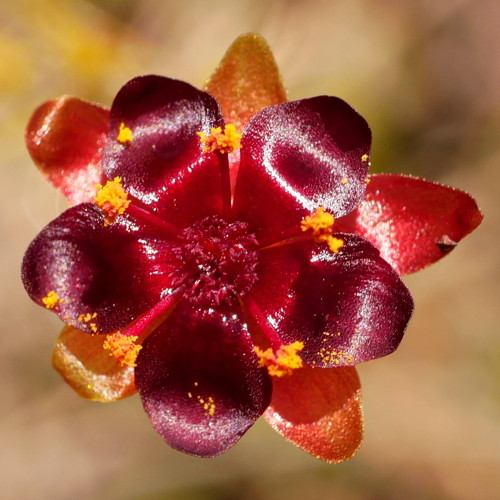
Drosera hortiorum. Photo © Thilo Krueger.
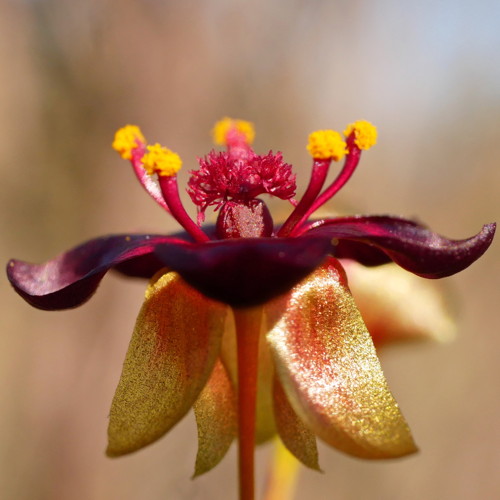
Drosera hortiorum. Photo © Thilo Krueger.
Drosera huegelii Endl.
The epithet, huegelii, honours Baron Charles von Hügel (1795–1870), who collected this species in January 1834 from the King George Sound region somewhere near the early (1829) settlement of Albany, Western Australia.
Western Australia – Coolup; Beaufort; Cranbrook; south coastal regions from Augusta to Cape Arid.
Grows on the margins of swamps, winter-wet depressions and coastal heathlands in sandy soils. Also found in the skeletal, gritty, black silt soils covered with moss on the aprons of granite outcrops.
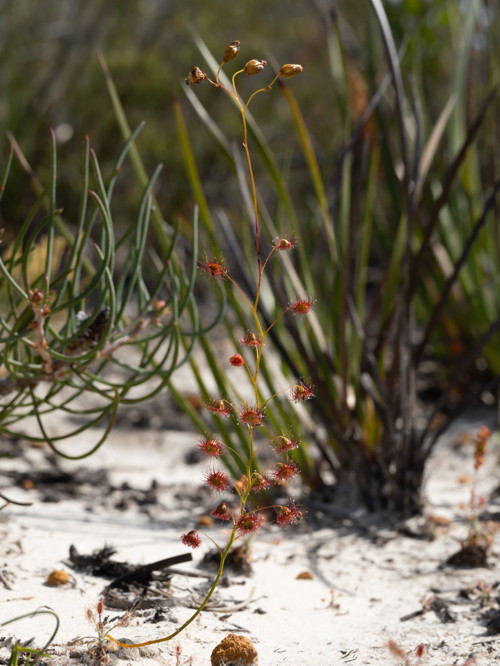
Drosera huegelii. Photo © Boaz Ng.
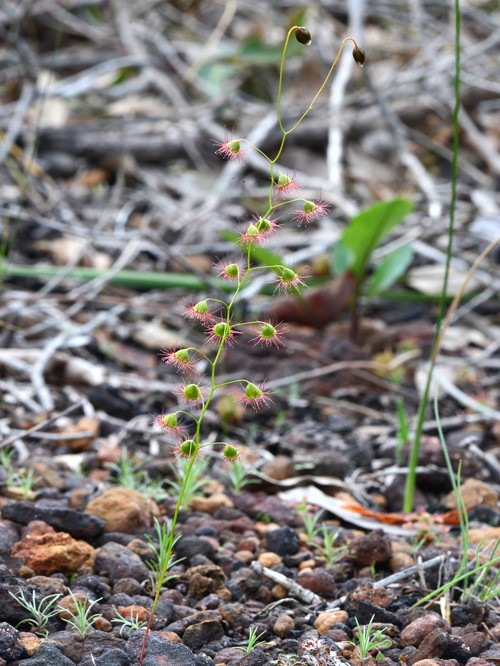
Drosera huegelii. Photo © Richard Nunn.
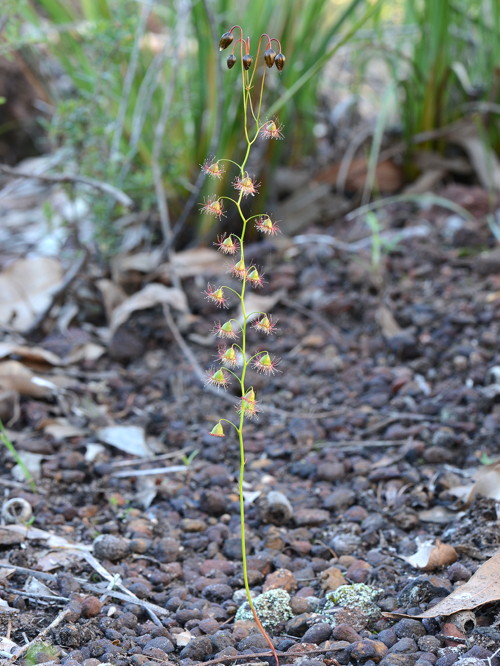
Drosera huegelii. Photo © Richard Nunn.
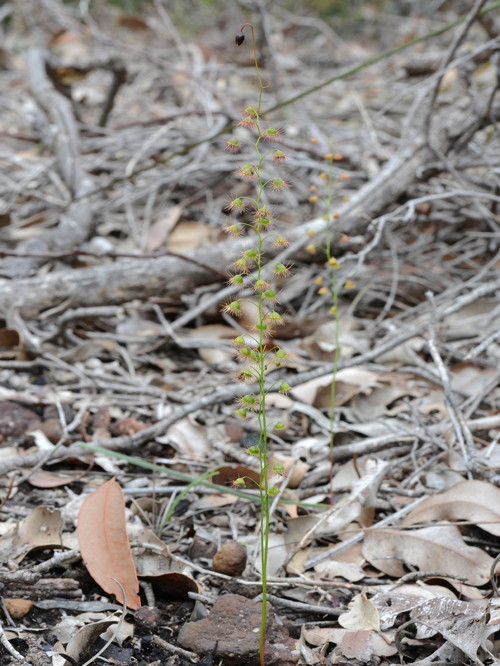
Drosera huegelii. Photo © Richard Nunn.
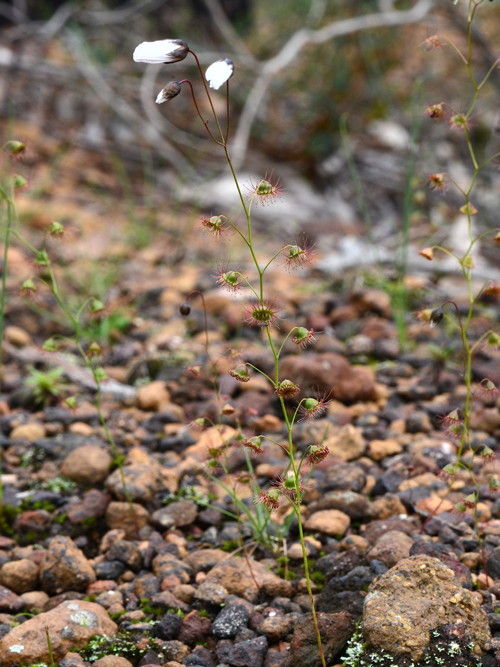
Drosera huegelii. Photo © Richard Nunn.
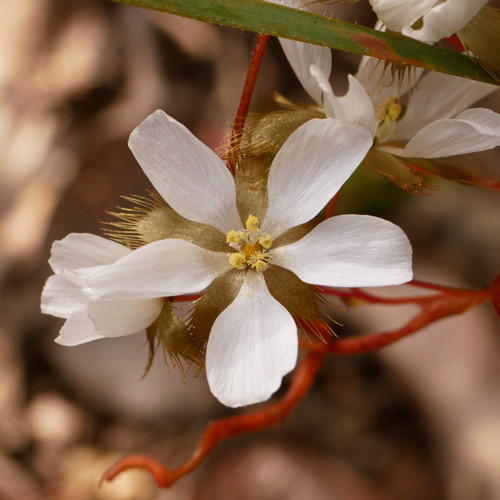
Drosera huegelii. Photo © Thilo Krueger.
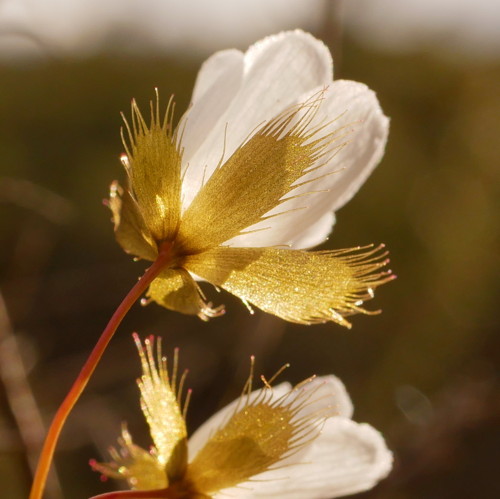
Drosera huegelii. Photo © Thilo Krueger.
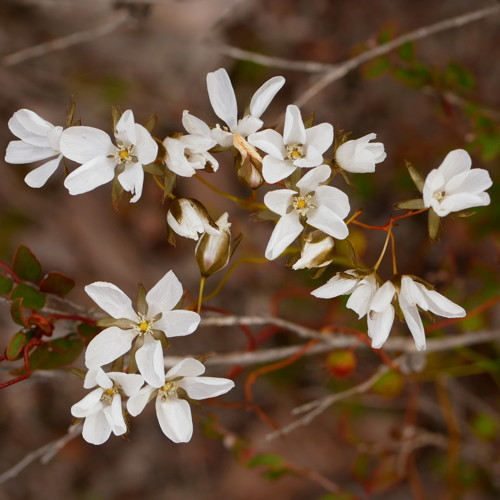
Drosera huegelii. Photo © Thilo Krueger.
Drosera huegelii var. phillmanniana Y.-A.Utz & R.P.Gibson
The epithet phillmanniana honours Phillip (Phill) Mann (1951-2014), a Western Australian carnivorous plant enthusiast and taxonomist who recognized the distinctiveness of this taxon and brought it to the attention of the authors.
Western Australia - only known from the highest mountains of the Stirling Range.
Occurring above ca. 800 m elevation in open, wind-exposed montane heath
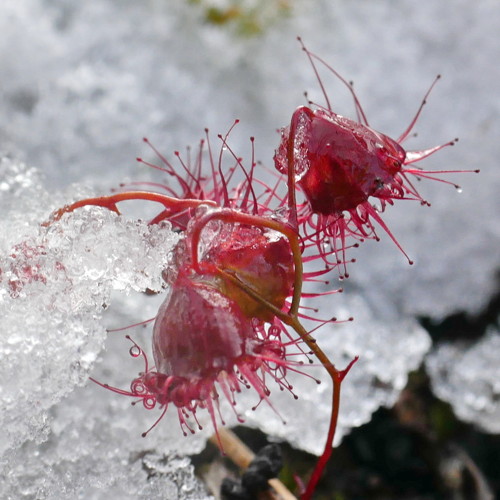
Drosera huegelii var. phillmanniana. Photo © Thilo Krueger.
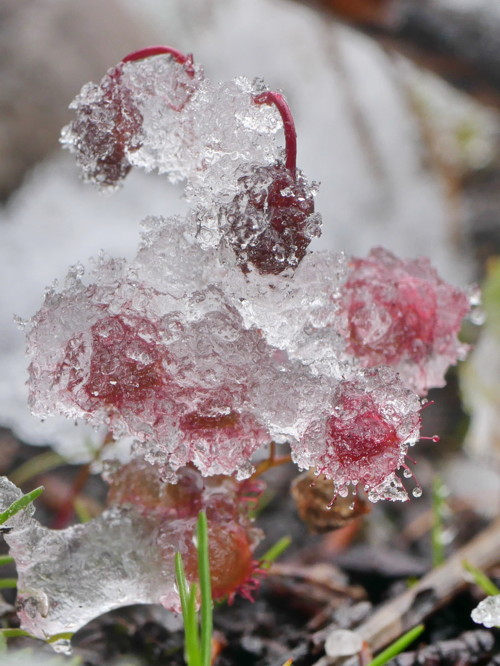
Drosera huegelii var. phillmanniana. Photo © Thilo Krueger.
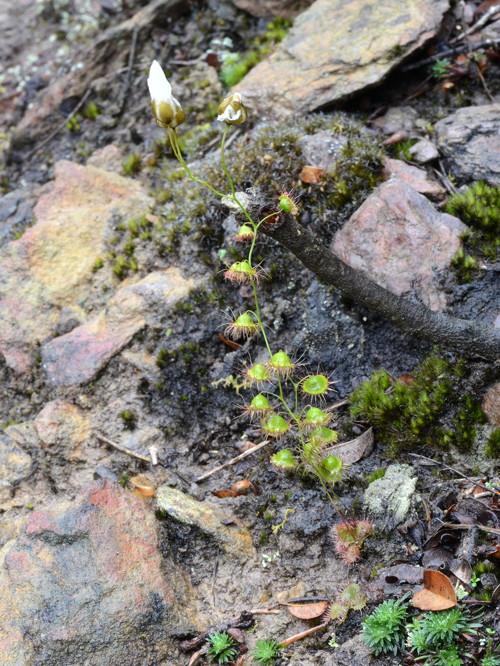
Drosera huegelii var. phillmanniana. Photo © Richard Nunn.
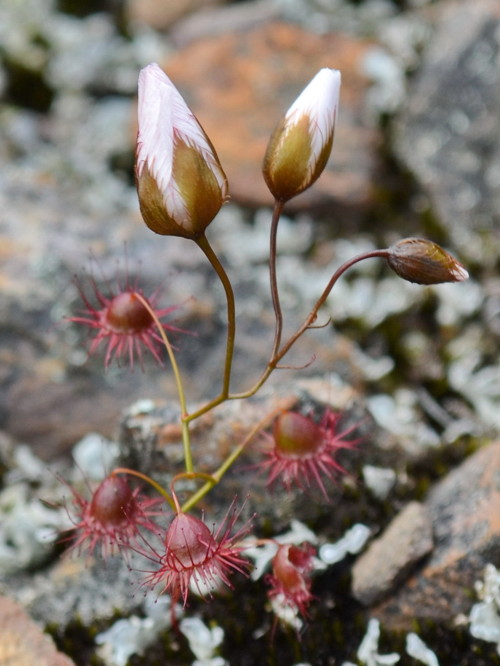
Drosera huegelii var. phillmanniana. Photo © Thilo Krueger.
Drosera humilis Planch.
The epithet, humilis, is from the Latin humilis (low growing), in reference to its small, low growth habit.
Western Australia – known to be a common species from the Moore River north to Kalbarri, and inland to Ajana in the north and Wongan Hills in the south.
Grows in well-drained, winter-wet, deep white or yellow sandy soils amongst low shrubs on heathland on the northern sand plains. Near the Zuytdorp National Park, D. humilis grows in red sandy soils.
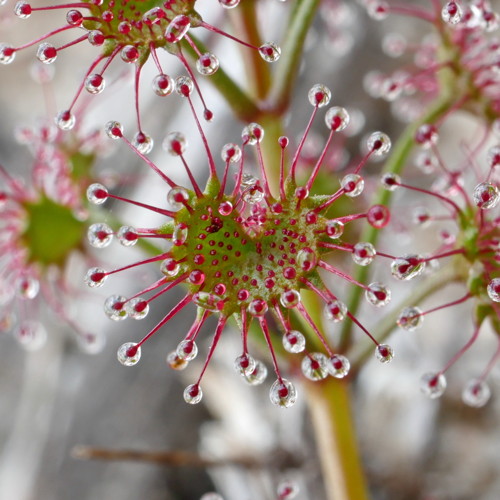
Drosera humilis. Photo © Thilo Krueger.
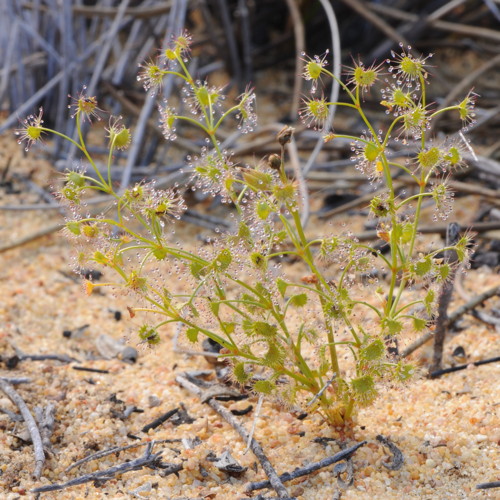
Drosera humilis. Photo © Richard Nunn.
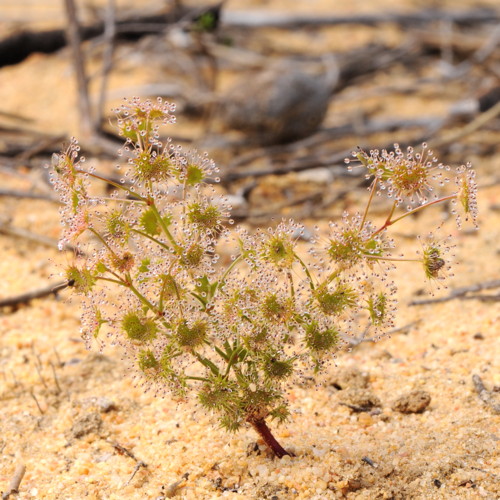
Drosera humilis. Photo © Richard Nunn.
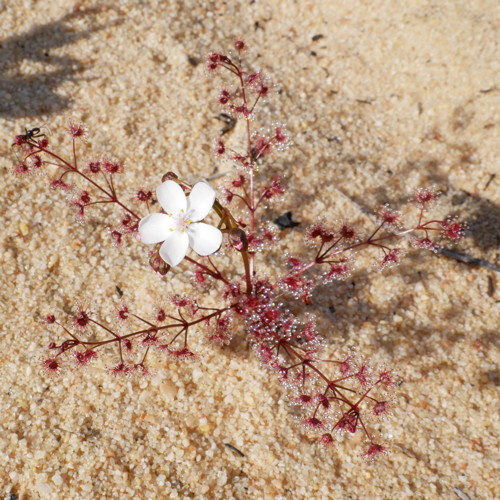
Drosera humilis. Photo © Thilo Krueger.
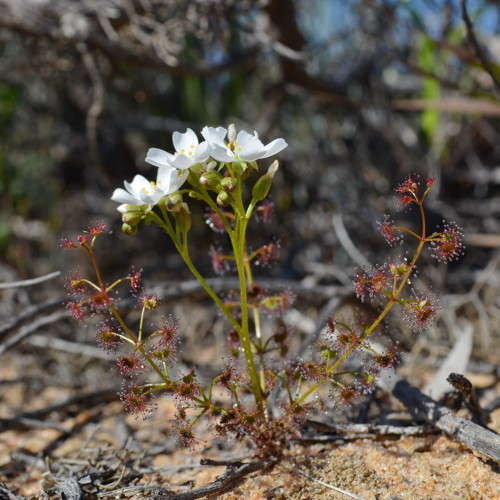
Drosera humilis. Photo © Thilo Krueger.
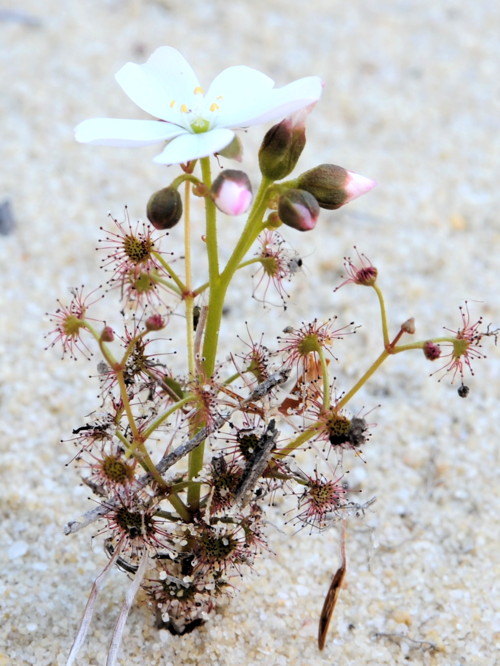
Drosera humilis. Photo © Richard Nunn.
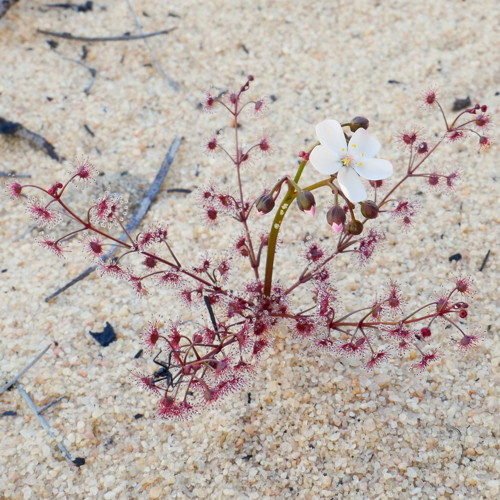
Drosera humilis. Photo © Thilo Krueger.
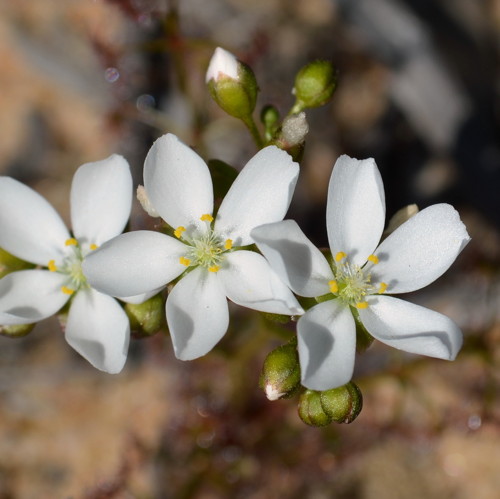
Drosera humilis. Photo © Thilo Krueger.
Drosera indumenta Lowrie & Conran
The epithet, indumenta, is from the Latin indumentum (hair-covering), in reference to the glandular, hairy indumentum covering all of the major axis from base to apex, pedicels and sepals.
Western Australia – Occurs from Casuarina to Margaret River.
Grows in waterlogged, winter-flooded (to a shallow depth) swampland flats and their margins, in black sandy soils made up of a mixture of white silica sand and humus derived from decomposed leaf-fall vegetation, in association with reed-like sedges (upon which it commonly climbs and attaches) and paperbark trees (Melaleuca species). These habitats can dry out in summer, but generally maintain their soil moisture for the majority of the year.
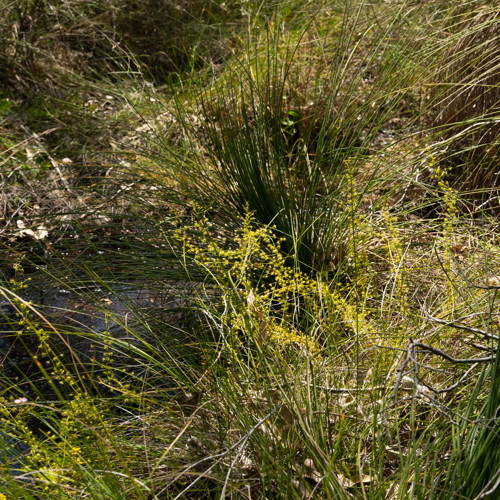
Drosera indumenta. Photo © Boaz Ng.
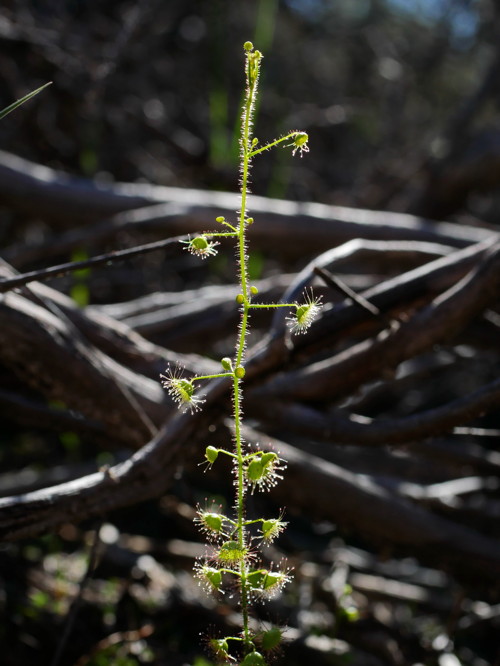
Drosera indumenta. Photo © Thilo Krueger.
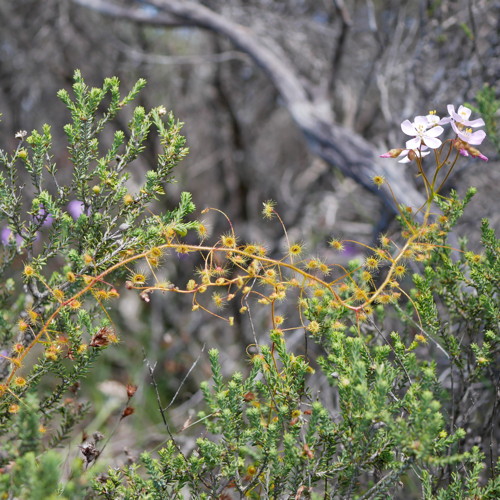
Drosera indumenta. Photo © Thilo Krueger.
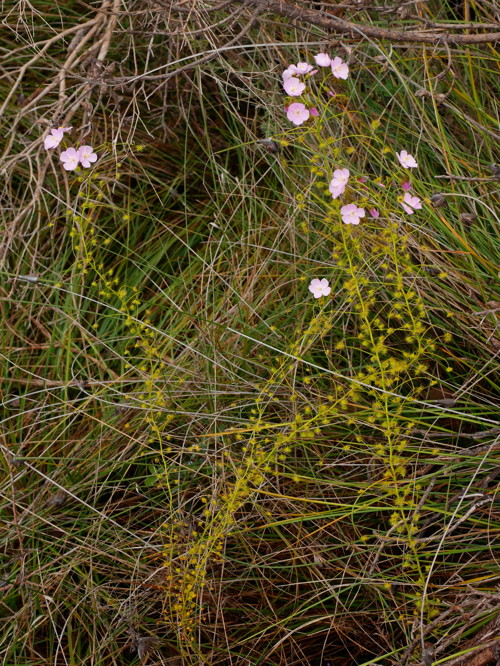
Drosera indumenta. Photo © Thilo Krueger.
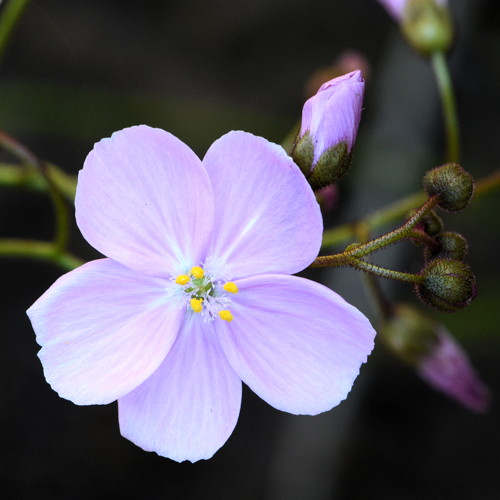
Drosera indumenta. Photo © Richard Nunn.
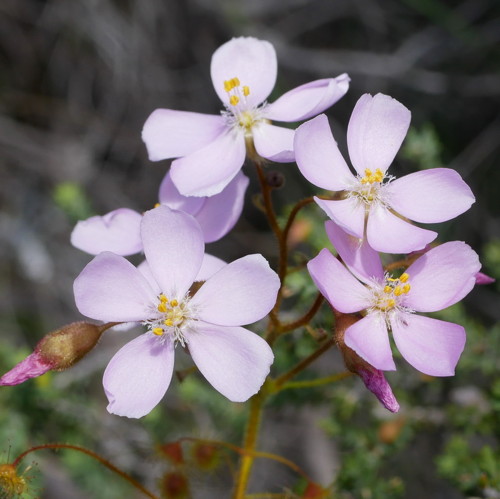
Drosera indumenta. Photo © Thilo Krueger.
